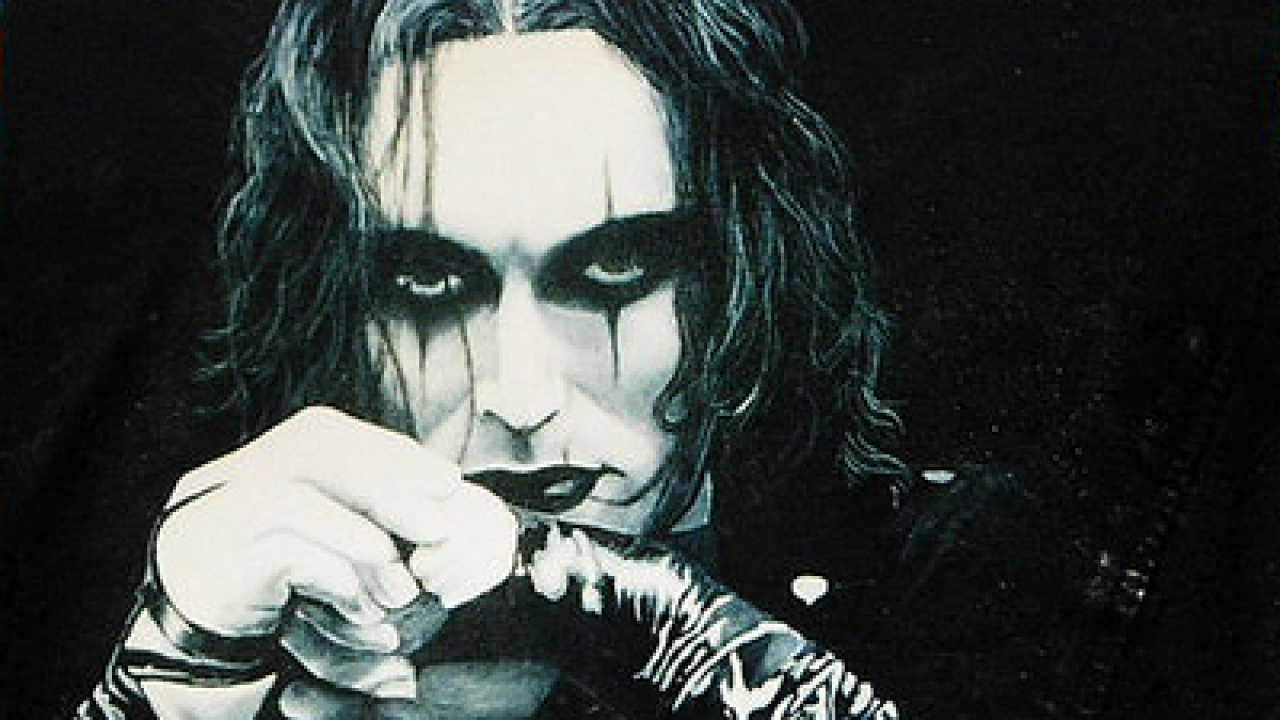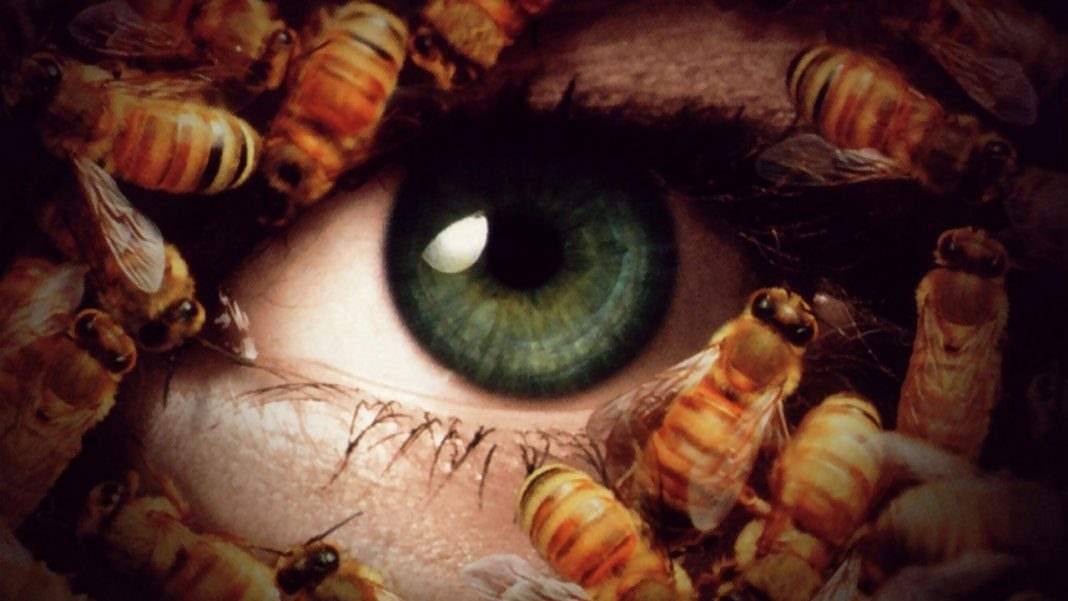The Crow is one of those movies that seem really cool when you’re a teenager but are quickly revealed to be garbage once you hit adulthood, or so popular opinion would have us believe. 25 years after its release, the film that inspired many a young man to don a trench-coat and eyeliner (including, in one of the show’s better jokes, South Park‘s Satan character) appears very…of its time. This one, unlike any other, is nineties as all hell, like a Nine Inch Nails music video stretched to 90-odd minutes only with way more guitar solos. But, much like Trent Reznor’s scuzzier works, the movie isn’t without its dark charms either.
Critic-hater Alex Proyas (Gods of Egypt was a masterpiece, damn it!) actually does a fine job of adapting the comic-book on which the film is based, with several shots seemingly transposed right from page to screen — watch how Eric Draven slowly climbs a ladder in the rain, the tracking shot moving gloriously up with him. The fact the movie is simultaneously super pulpy, violent, emo, and earnest — an interesting combination in itself for a story about some sappy dude coming back from the dead, dressing in leather, and offing those who have wronged him — is kind of a miracle in a world where we’re expected to take Tony Stark and his time travel calculations deadly seriously.
The (under)world created by Proyas and DOP Dariusz Wolski (who also shot the moody Sweeney Todd, as well as Eminem’s rain-soaked “Stan” video), taken from James O’Barr’s cult comic series, is incredibly evocative and well-realized — even if the VFX have aged in the intervening years (the bird still looks decent, at least at first). Although the action takes place in Detroit (the city is never mentioned by name), it’s easy to imagine Eric Draven kicking ass just a short walk away from Batman & Robin‘s neon-sporting, punk rock no-goods, or even the lair of Tim Burton’s Penguin in Batman Returns, released just two years previous (that film looks positively upbeat and hopeful in comparison — people have actual jobs in it).
The Crow is dark, in every sense of the word (is it ever daylight?) and its unnamed, crime-ridden central location is a place nothing good ever seems to happen (who’s brave enough to ride that overground subway car at night anyway!?). Early on, the question of who gets married on Halloween comes up (side note: me), but the decision to do so makes complete sense in a world where everybody is a product of their environment, for better or worse. Why not tie the knot on the spookiest day of the year when everything around you is crumbling and even venturing outside is taking a massive risk?

The only spark of hope comes from Rochelle Davis’ plucky Sarah, whose voice-over, although hokey and borderline unnecessary at times, fits within a story that feels a little like an angry teen’s LiveJournal entry come to life. Darla and her hotdog-eating buddy, Ernie Hudson’s beleaguered cop, are the only bright sparks but even their lights threaten to get extinguished in the harsh reality of life in a city run by hoodlums and psychopaths. Wisely, Eric’s return doesn’t fix everything, rather it exposes the place’s rotting heart. It’s up to characters like Darla’s neglectful mother to figure out how to do better, instead of expecting things to change for them.
Eric Draven is no superhero, but his influence is keenly felt in everything from The Matrix — all-black outfits, big guns, boots, trench-coats, endless philosophizing about the meaning of life — to Queen of the Damned‘s Lestat, who is basically just Draven in even less clothing and backed up by a better band (seriously, Eric’s band must have sucked — their promo image looks like the Goo Goo Dolls). Even Heath Ledger’s Joker, with his smudged face-paint and lanky hair, has a touch of Draven’s Crow to him, albeit more manic and less sexy (The Crow is still very sexy, just FYI).
Proyas’ film is very 90s grunge/goth, like the weird rust on a Nine Inch Nails album cover. Hell, even Reznor himself could be seen to have dressed like Eric Draven at one point in his career. Nine Inch Nails appear on the soundtrack for the movie, covering a Joy Division song no less, while The Cure contribute a track that they reportedly don’t remember recording. Much of the movie plays out like a music video cut scene, with characters flitting from location to location in ever more outlandish outfits. Two bands perform live, both wildly eccentric. Music flows through the film’s veins, but it’s never the focus, always emphasizing rather than taking away.
The Crow is messy, introspective, and rough around the edges, but we’re getting a glimpse into this world over Eric’s shoulder, so its loose structure and on-the-fly shooting style make a certain amount of sense. Remarkably, the movie doesn’t carry the stench of re-shoots or body doubles because its focus remains at a respectful distance. Even when the camera does hang behind Draven, it’s oddly fitting. Real explosions, which always look better than their computer-generated counterparts due to their innate imperfections, ensure the ever present (and reportedly very real) danger is felt. And, considering how freezing it clearly was on location, it’s a wonder poor Brandon Lee didn’t succumb to hypothermia rather than the real bullets that would accidentally kill him.

Lee’s presence looms large over the movie, even when it’s probably not actually him in the shot. Beetlejuice is often criticized for not having enough of Michael Keaton in the titular role, so it’s funny Lee’s Crow is more present given the actor wasn’t physically there for much of the shoot. Whether this should be attributed to the strength of the late star’s performance, or the skill in establishing his character so audiences wouldn’t notice the joins, is arguable. The point is, Eric Draven is definitely the star of The Crow, whether that’s really him bashing out moody guitar licks on the top of a skyscraper or not.
The movie’s other looming presence is Michael Wincott’s super-goth villain, Top Dollar. The actor recently appeared in TV’s Westworld, as a piano-playing southern gent, which is in stark contrast to the horrifying lunatic he plays here. Top Dollar is an interesting foil for Eric Draven, because he’s cold, calm, and emotionless. His death almost doesn’t register, so wide-ranging is his influence. Top Dollar is more symbol than man, which is useful because his moniker is kind of silly for such a scary dude. Horror Icon Tony Todd shows up in a small role as one of his business associates, because of course he exists in this world, and it’s a shame he isn’t given more to do here because the two play well off each other. Todd is such a pro he could’ve occupied the Bai Ling role and it would’ve ruled. Still, better some Todd than no Todd at all.
The Crow posits the idea that nothing is trivial, but watching it again as a grown woman, as opposed to a horny, sullen little teenager, I can’t help wondering whether everything is actually this meaningful? The cynical side of me thinks Eric Draven is a bit of a sap, and that the action should really be focused on Top Dollar, who has his own weird sex appeal. But the parts of me that unabashedly love Queen of the Damned can’t help but get swept up in all the eyeliner, leather pants, and violence. The Crow is so stylish and so particularly of its time, it’s kind of impossible to resist its charms, even when acknowledging how downright ludicrous most of what happens actually is.
Taken purely as it is, Eric Draven’s story is a sadly simple one. The fun comes from how good he looks taking revenge, rather than the revenge itself. There’s a poetic element to Lee dying midway through shooting, of course, but if that’s the only thing you remember about The Crow, then give it another watch ’cause it’s genuinely worth it. If nothing else, the soundtrack is still loaded with bangers and it’ll transport you back to a time when Detroit probably didn’t really look like that (as opposed to now, when it’s routinely the setting for post-apocalyptic stories). It can’t rain all the time, but we’re probably going to brood regardless. And look good doing it.





